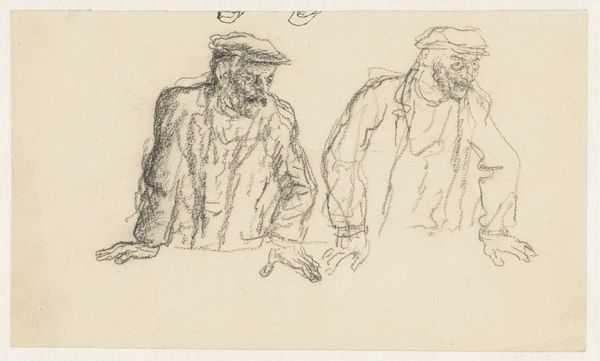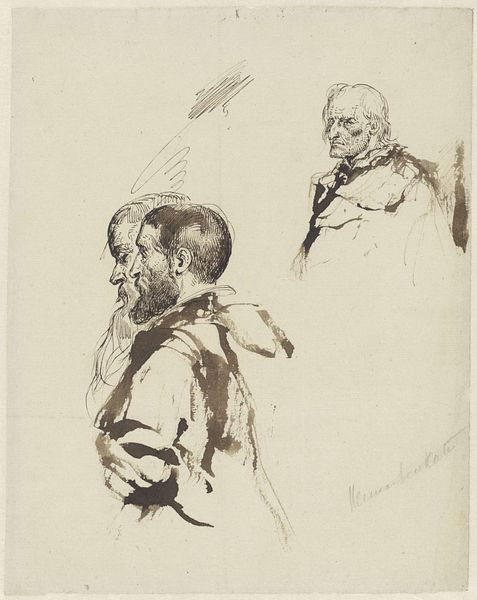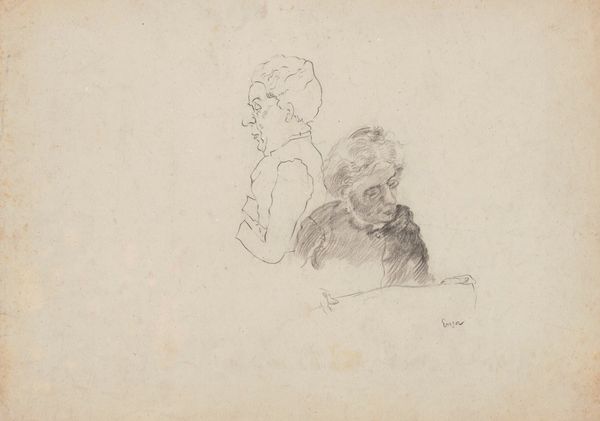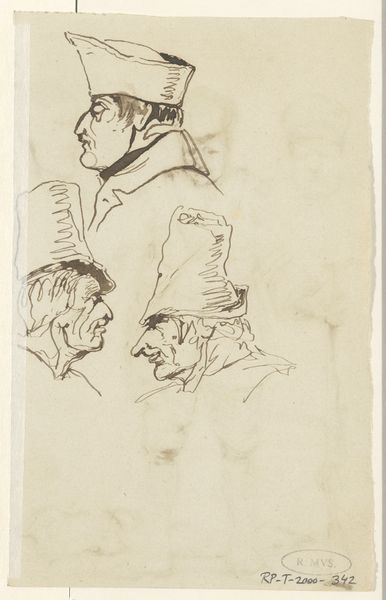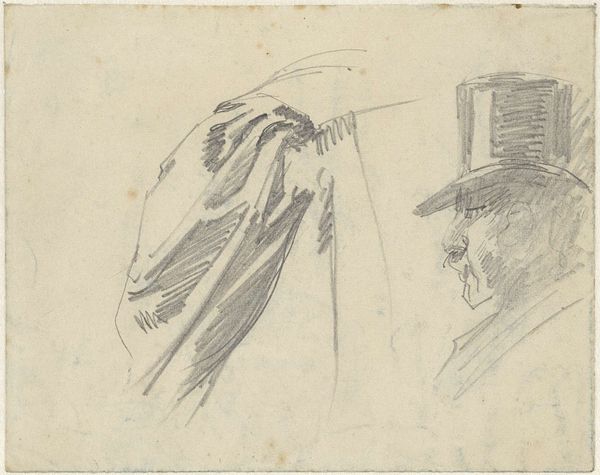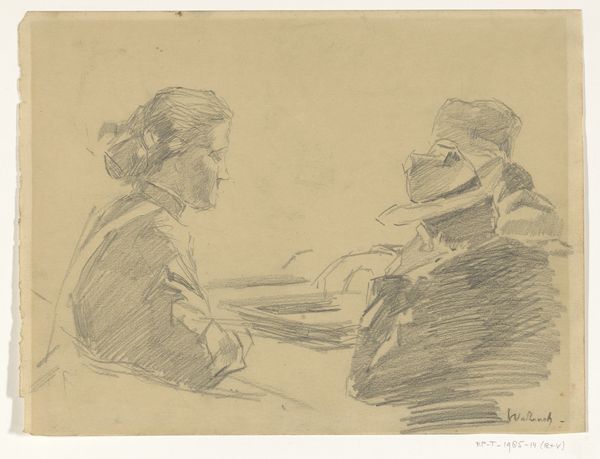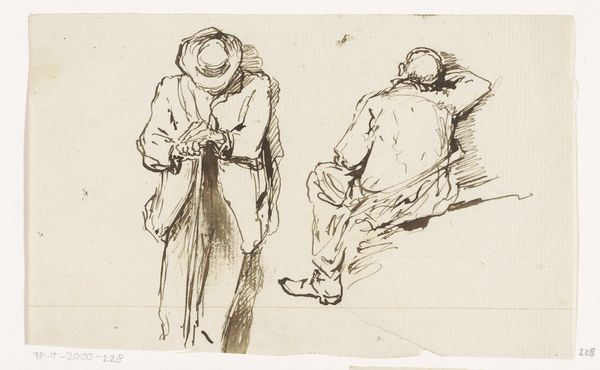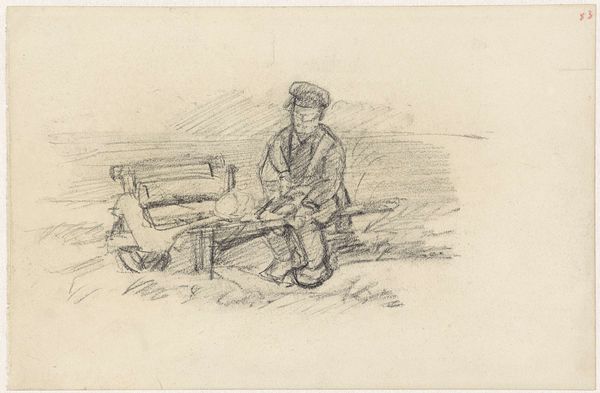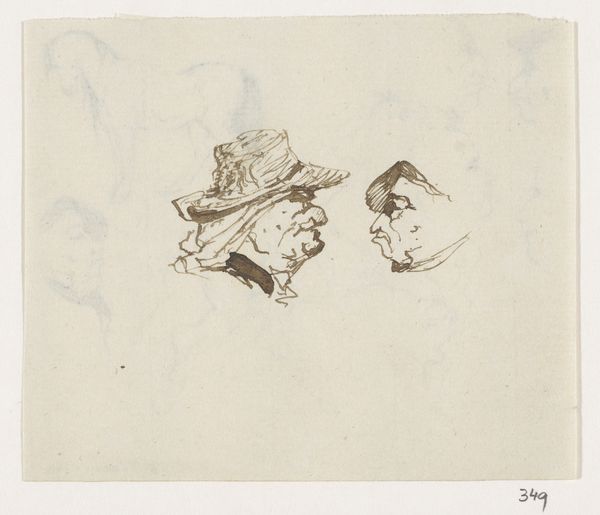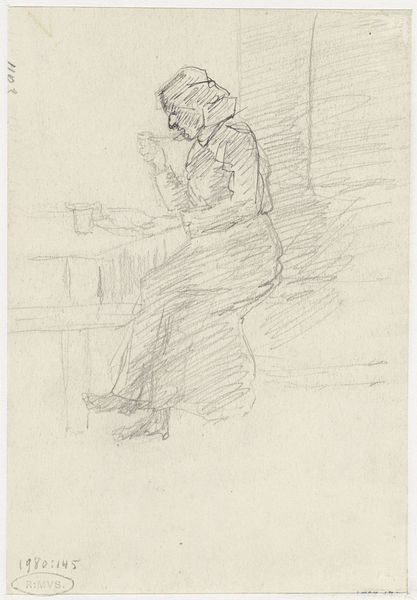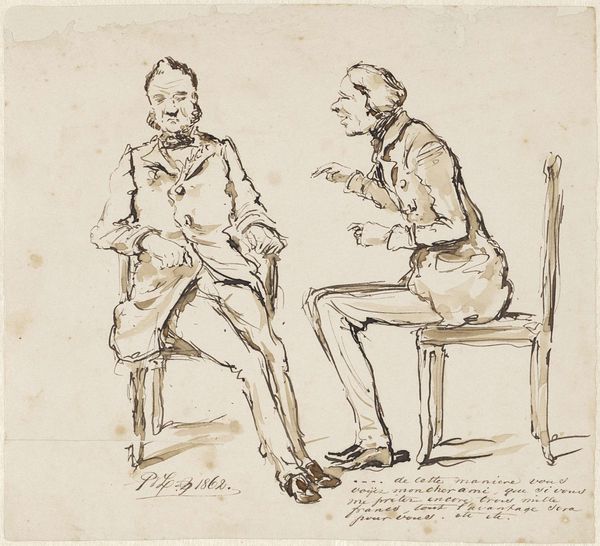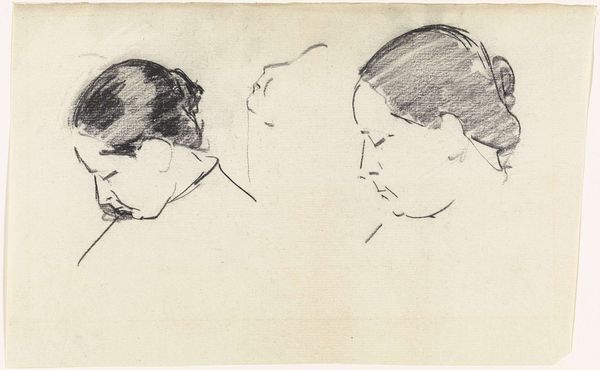
#
light pencil work
#
quirky sketch
#
pencil sketch
#
incomplete sketchy
#
personal sketchbook
#
idea generation sketch
#
character sketch
#
sketchbook drawing
#
fantasy sketch
#
initial sketch
Dimensions: height 263 mm, width 364 mm
Copyright: Rijks Museum: Open Domain
Curator: At first glance, I perceive a certain isolation, a melancholy almost, in these sketched figures. What's your take? Editor: Well, let's begin by noting we are observing "Two Studies of a Seated Man, Seen from the Back" by Guillaume Anne van der Brugghen, dating somewhere between 1821 and 1891. Given that these are studies, it raises the question of labor—the artist's labor in production, and the possible subject's labor implied by the clothing and posture depicted. Curator: You see it in the jackets and caps? The hunch of their backs as indicative of labour? To me, it reads like introspection more than manual exertion, rendered in light pencil work, all soft edges. A private moment captured quickly, deftly. Editor: Deftly, yes, but also efficiently. These were utilitarian studies, not destined for a salon. Notice how the artist captures the essentials with minimal strokes? What social class do these men represent, what are their living and working conditions that would necessitate such sparse, immediate rendering in a personal sketchbook? The social context is implicit in the raw materiality. Curator: Interesting juxtaposition. The material context leads you to the social; I, on the other hand, see a clear duality expressed formally. Consider the contrast in line and colour – one figure depicted with strong, darker pencil lines, almost brooding, the other in softer, lighter, reddish hues suggesting, perhaps, a warmer, more sanguine nature. Editor: Colour use undoubtedly contributes, but beyond formal duality lies an economic disparity implied, if subconsciously, by the very availability and cost of materials. Red chalk, while cheap, was perhaps relatively less available than readily accessible graphite. Are we then looking at relative economic standings conveyed through humble means of production? Curator: You return unfailingly to the means! Perhaps it's a visual exploration of character through form, line, colour - a dialogue between shadow and light, hard and soft, as explored via structural opposition and subtle gradation. I find it elegantly resolved. Editor: Resolved perhaps on a formal level, but what impact did those resolved forms have on society, on visual culture at large? Where and how were such preliminary works consumed, and who had access? Such questions of class, consumption, and production always shape our reading. Curator: Yes, an important, but different, lens. Editor: Indeed. It provides an inescapable perspective.
Comments
No comments
Be the first to comment and join the conversation on the ultimate creative platform.
